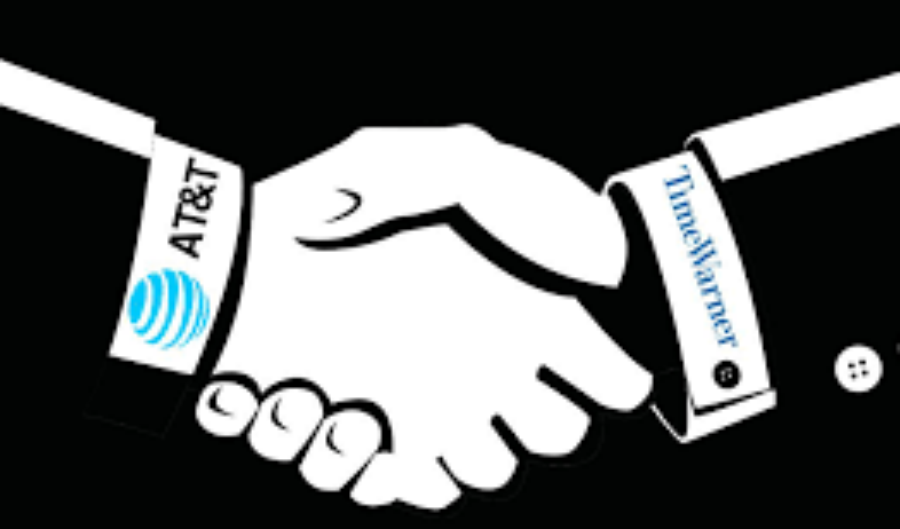AT&T-Time Warner Merger Provides Single Greatest Lesson for 21st-Century Business
In what will likely be the biggest antitrust case of the past 100 years, Judge Richard Leon has taught us how to survive in 21st-century business.

In his book, Rules of Thumb, Alan Weber provided a series of 52 rules he’d learned from life. Number 24 was, “If you want to change the game, change the economics of how the game is played.”
Several weeks ago Judge Richard J. Leon of the United States District Court in Washington sent a clear signal that the economics of how the game is played have changed, when he gave the go ahead for the AT&T Time Warner merger.
The short story is this. The DOJ was opposed to the AT&T Time Warner merger because it believed that it would not have been to the benefit of consumers. This is based on the simple premise that the more choices there are in a market the greater the likelihood of innovation, fair pricing, and diverse options for the consumer.
According to an article in The New York Times, Judge Leon’s opinion was that the “Justice Department had not proved that the telecom company’s acquisition of Time Warner would lead to fewer choices for consumers and higher prices for television and internet services.”
Seems simple enough, right? But there’s much more to this worth paying attention to. Because the rules that have changed aren’t the obvious ones of how AT&T and Time Warner play but a whole ‘nother set of players who are defining their own rules.
You Can’t Handle The Truth
Mark Zuckerberg’s testimony on the hill several weeks ago gave us all cause for concern when it comes to our legislators’ knowledge of technology. I had so wished that at any of the dozen or so times he was asked, “So, exactly how does Facebook make money?” Zuck would have just said, with a straight face, “You Can’t handle the Truth!”
“But in fairness to Mr. Goldberg, at least his contraptions would normally move a pea from one side of a room to another.”
In stark contrast Judge Leon’s depth of knowledge, insight, vision, and ability to clearly articulate the massive changes at play due to technology, had me shouting hallelujah in the hallway!
This was a massive case. The trial transcript is more than 4,300 pages long, and Judge Leon’s opinion is a whopping 172 pages. I’m convinced that it will be one of the most read cases in business school classrooms for years to come. Not because of its legal prowess, but rather its portrayal of a post-industrial era attitude towards competition.
Although it contains some of the most enlightening and entertaining commentary that you’re likely to find in any court’s opinion, including such gems as the term “Poppycock,” it also makes it clear that this case was not just a matter of legal technicalities but rather foundational differences between old and the new ways of doing business.
That was evident in my favorite of Judge Leon’s comments. He compared the antiquated and ridiculously complex financial models presented by the DOJ to a Rube Goldberg device. After which, he went on to say, “But in fairness to Mr. Goldberg, at least his contraptions would normally move a pea from one side of a room to another.”
It’s all very entertaining, however something dramatic is also at play that cuts to the very foundation of the free market. And it’s something that will undoubtedly challenge the most basic assumptions that we’ve used to define what constitutes healthy competition, how businesses operate, and what is ultimately in the best interest of the consumer.
Going Vertical
First, it’s worth taking a moment to describe the difference between a vertical and a horizontal merger.
A horizontal merger is between competing companies that most often represent alternative options for a consumer and are therefore driven, independently, to provide the best value. Horizontal mergers are frowned upon in a free market when they significantly reduce the positive effect of competition. We all get this cornerstone of free markets.
Vertical merges are between companies that are at different points within the same supply chain. For example, one company manufacturers products and then merges with a separate company that distributes them.
In both types of mergers, the objectives of the companies merging are to achieve higher levels of efficiency, lower costs, and greater profit. Nothing at all wrong with that. The problems set in when the merger takes the option of choice away from the consumer and/or puts the merged company in a position where they can exert monopolistic power over pricing.
The history of regulation governing mergers is fascinating. It was spurred by the industrial trusts of the late 19th Century and the later monopolies created through mergers in the early 20th Century. There were political, labor, and economic concerns over so much concentrated power. But this was mostly true for horizontal mergers.
Vertical integration however, was eventually shunned by corporations themselves under the premise that if everyone in a supply chain could focus on their core competency overall innovation and quality would rise, and inefficiencies would be driven out.
“You here a lot about digital disruption, right? Well, this is exactly what it looks like!”
That began to makes sense when the basics of an information sharing infrastructure were put into place through telecommunications and transportation infrastructure of hte early 20th Century. And it worked exceptionally well for the first hundred years.
Interestingly, it was technology that drove and enabled the shift to vertical disintegration. In fact, a very early conversation I had with management guru Peter Drucker, I asked him what he thought was the greatest single shift in business during the 20th Century. His answer was the shift from control through ownership to control through strategy and the shift from delivering products to delivering services. This, according to Drucker, was the result of technological advances in how we work across businesses to build common strategies.
So, how does all this play into the AT&T Time Warner Merger? Clearly, when it comes to content Time Warner has a treasure trove of properties, including HBO, Turner, TNT, CNN, Cartoon Network, and Warner Bros. AT&T has none of that. But AT&T does have control over the fastest growing platform for content consumption, mobile networks. Combined they seem to be purely complimentary.
There’s also fair precedent for many other vertical mergers of this sort, including Comcast and NBC Universal, Oracle and Sun, Google and Double-click, and Disney and Pixar.
Why then would the DOJ oppose this particular merger? Because, they are operating under an old industrial era economic model in which companies could achieve adequate vertical integration to meet the demands of the market and to compete on a global stage.
No longer.
You here a lot about digital disruption, right? Well, this is exactly what it looks like! Owning the network or owning the content alone isn’t enough. And the reason is fascinating.
Today’s marketplace is wildly different and it’s creating some of the most perverse relationships between companies–what Ken Auletta calls Frenemies, in the book by the same name.
Consider that Amazon which competes with digital media companies through its in-house produced original TV content, such as The Tick, also stores the content for its competitors’ TV series on its cloud storage. That would be like buying critical product from a competitor who you are also suing because they are stealing intellectual property from you. Oh, wait, that’s what Apple and Samsung have been doing for years.
In fact, according to a New York Post article, despite handing over a half billon dollars to Apple for patent infringement, Samsung makes more off of the components it provides to Apple for iPhone X than it does from its own Galaxy S8.
The point here is that in today’s global markets supply chains are so intertwined and inter-reliant that in many cases the formality of a merger is just that. Sort of like the difference between cohabitating with a domestic partner and being married. Set aside religion for a moment, it’s a legal construct for economic benefit and convenience.
Whoever Owns The Behavior Wins
The one aspect of the AT&T Time Warner merger that should act as wake up call (or more like a fire alarm) to virtually every industrial era company is something that I talk about a great deal in my latest book, Revealing The Invisible. Judge Leon specifically pointed out that traditional media companies are at a distinct disadvantage when it comes to the erosion of their revenue streams from advertising.
In what has to be one of the court’s most cutting observations, Leon observed that while yesterday’s advertising players were media giants, today’s are vendors of hardware, technology, email, and social networking. He went on to point out that it’s these same companies who can, through behavioral marketing, so finely target their audience that they can deliver both advertising and content that is infinitely better suited to the consumer’s preferences than any traditional media company.
In many ways what he was saying is that the industrial era model of business, mass marketing, billboard advertising, and ultimately faceless consumerism is on life support. Whoever owns the behavioral data owns the market. It’s that simple.
But the way, I see shades of this in many other areas as well. Musk is pushing Tesla towards ever greater vertical integration. In some cases that’s overt, such as owning their car dealerships and shunning any sort of traditional marketing. In other cases its subtle, such as collocating their battery supplier manufacturing and R&D under the same roof as the rest of their manufacturing at the Tesla Giga factory. In every case Tesla is using behavioral data across a tightly vertically integrated supply chain to create what will be an incredibly personalized experience.
So, what’s all this pointing towards? Simply that the rate at which companies need to innovate today and coordinate across their supply chains is impossible without ownership and access to deep behavioral data about the customer.
Of course, none of this is a prediction of success for the merger between AT&T and Time Warner. Whether two businesses that are both facing huge challenges can achieve the economies of scale needed to overcome those same challenges when combined is something I do not hold out much hope for over the long term. AT&T has the data from its mobile users if it can figure out what to do, and if it will be tied through regulation in what not to do with it, are entirely separate and unanswered questions.
To me the most valuable lesson in all of this is that we are at an inflection point between the industrial era models that served us so well to scale and meet the needs of a burgeoning market of consumers to the hyper-personalized behavioral models needed to meet the demands of an insatiable appetite for personalized innovation.
You can play by the old rules or try to figure out the new ones; all that’s sure is that the rules of the game have indeed changed.
This article was originally published on Inc.
Image credit: ConsumerAffairs.com
Wait! Before you go…
Choose how you want the latest innovation content delivered to you:
- Daily — RSS Feed — Email — Twitter — Facebook — Linkedin Today
- Weekly — Email Newsletter — Free Magazine — Linkedin Group
 Tom Koulopoulos is the author of 10 books and founder of the Delphi Group, a 25-year-old Boston-based think tank and a past Inc. 500 company that focuses on innovation and the future of business. He tweets from @tkspeaks.
Tom Koulopoulos is the author of 10 books and founder of the Delphi Group, a 25-year-old Boston-based think tank and a past Inc. 500 company that focuses on innovation and the future of business. He tweets from @tkspeaks.
NEVER MISS ANOTHER NEWSLETTER!
LATEST BLOGS
Four ways you can ensure employees take accountability for their work
One of the most important driving factors for any successful business is a high-performing team. Having people working for you…
Read MoreWhat is digital upskilling and why is it important?
Photo by Annie Spratt on Unsplash In a world of business that never stands…
Read More


